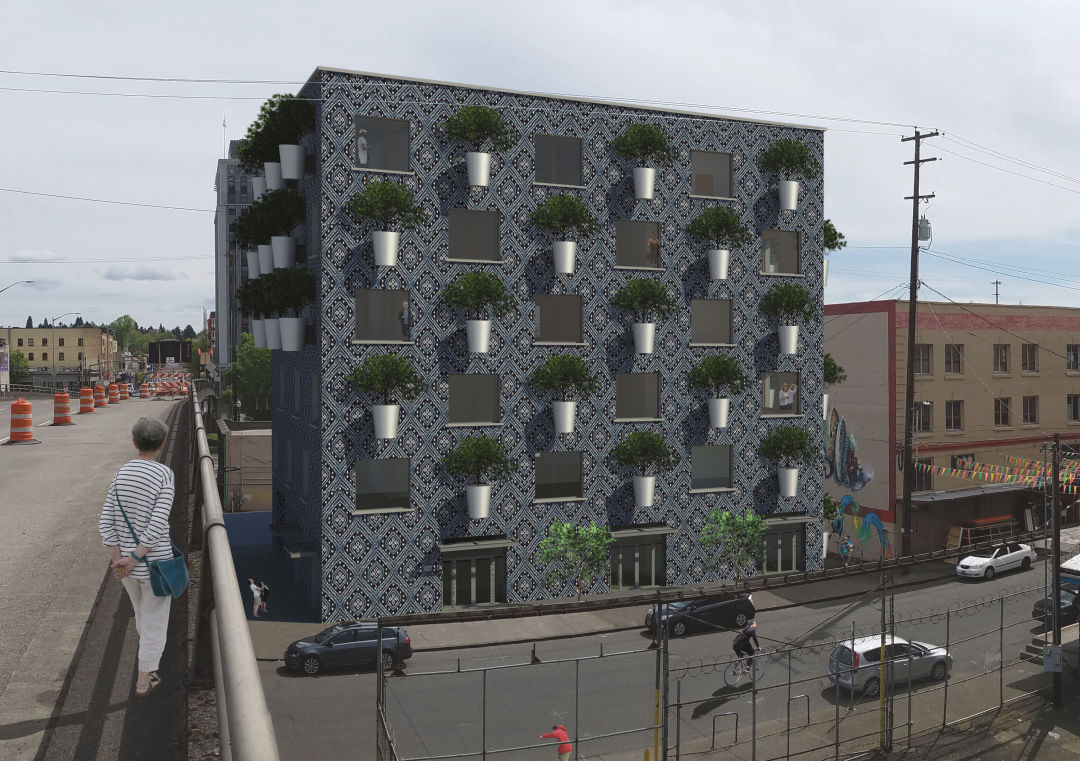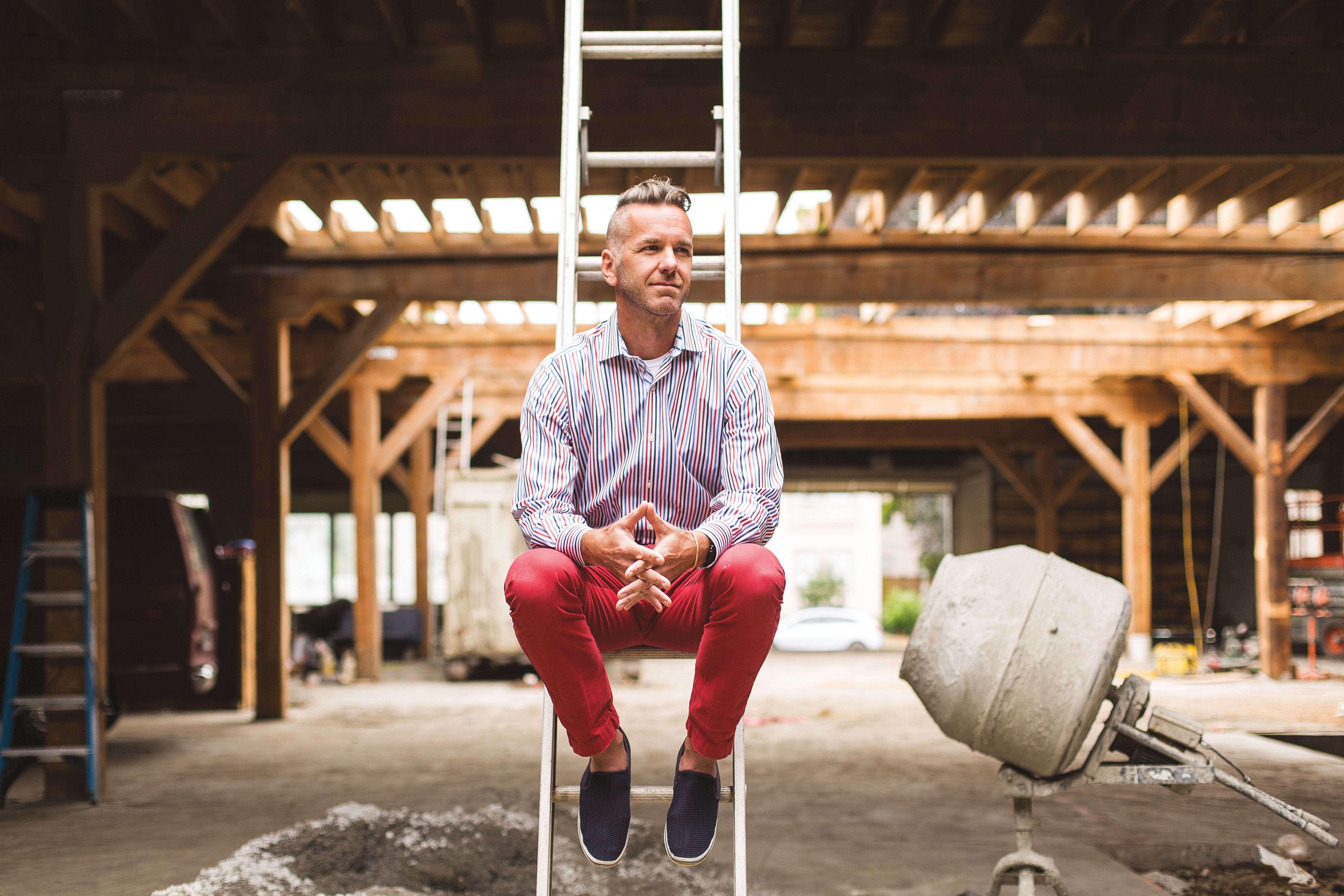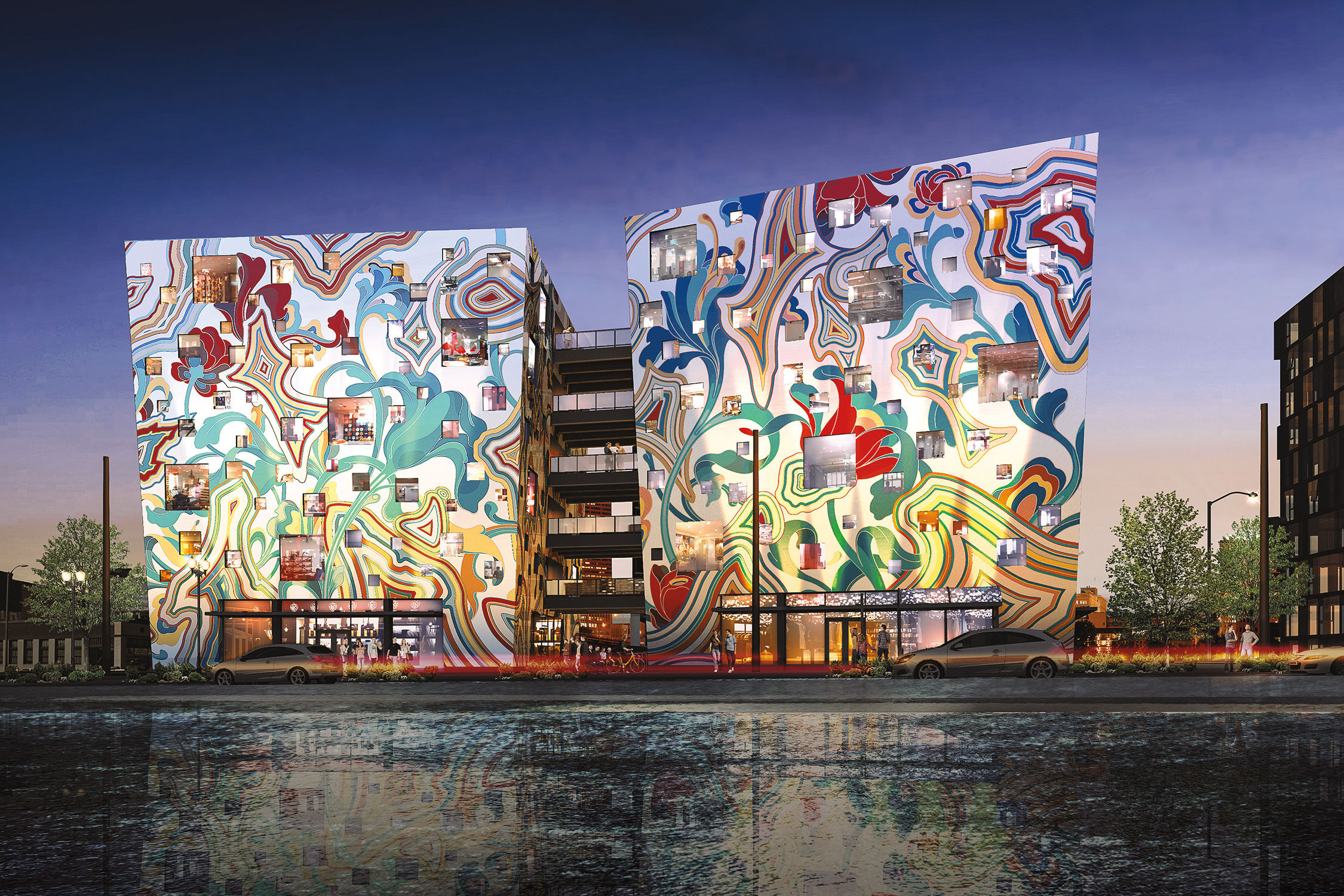This Portland Building Will Be Covered in Actual Trees

Kevin Cavenaugh’s initial napkin sketches of a simple six-story, 85-foot cube building at SE Third Avenue and Morrison Street left one remaining design question: how to add depth to its boring blank walls?
Trees, naturally.
To eastside drivers crossing the Morrison Bridge into downtown, the adjacent Tree Farm building will look “like a big-ass Chia Pet,” says Cavenaugh, who receives frequent tirades about the vibrant rose-and-geode-painted Fair-Haired Dumbbell, which his company Guerrilla Development installed last year at the Burnside Bridge’s east end. “Our city’s too safe. Let’s give it some controversial design work.”
Designed by Brett Schulz Architects (the firm behind NE Sandy's The Zipper and Han Oak), the new building will indeed be striking: Fifty-six conical custom steel tree planters—each weighing as much as a Cadillac Escalade—will be bolted to the Tree Farm’s four sides between its 10-by-10-foot upper-story windows, creating a checkerboard pattern. In addition to the preprogrammed dedicated irrigation system, to appease the fire marshal each tree has a separate exterior sprinkler head, triggered not by smoke but by melting wires.
The drought-tolerant and adaptable evergreen strawberry trees can withstand the varying sun exposure of any side and story of the building, and will flower and fruit from October to January. “We actually want birds to nest and it to be like a habitat,” says Cavenaugh.
Exposed concrete columns, beams, and walls define the ground floor’s 3,000 square-foot office, bike parking, and storefront facing Third. Close up, to pedestrians the metal-skinned building will closely resemble its industrial surroundings, at least for now. The Central Eastside is about to change drastically thanks to zoning shifts that allow for more residential and commercial spaces. The area’s expected to grow by 7,000 households between 2010 and 2035.
Cavenaugh, who anticipates an economic recession coinciding with the building’s (tentative) completion in spring 2019, explains that the unadorned design enables him to offer rent 25 percent below market value: “I don’t know whether it will be a lowercase-r or capital-R recession, but I know that it’s cyclical, and it’s due. I don’t want to be the dummy who has a big empty building right when the economy turns.”




